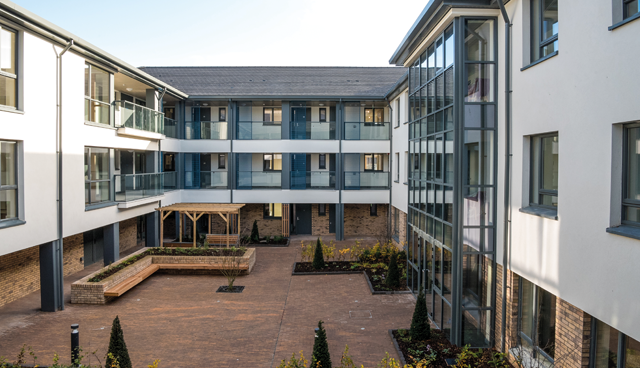
It is all about delivery
4th July 2022
Affordable and social housing underpin major efforts in Ireland’s youngest county
4th July 2022Eradicating homelessness: A Finnish perspective

Through international collaboration on Housing First, the eradication of homelessness can happen before the EU’s target of 2030, believe the Y-Foundation’s Juha Kahila and Saija Turunen.
The Y-Foundation, which is Finland’s fourth largest landlord, owns 18,000 apartments in 57 cities and municipalities in the country.
The foundation is actively involved as a national developer of the Housing First principle, an approach which has aided Finland in decreasing homelessness numbers by over 80 per cent in the past 35 years, and a model which is now being adopted across Europe and across the globe.
Housing First is an operating model, based on two cornerstones of housing as a human right and the requirement of the provision of support and services. A third element, which has been a critical success in Finland, is the delivery of housing solutions near to where others are living.
Pre-pandemic, Finland boasted progress of reducing homelessness numbers from 20,000 in 1985 to 4,341 in 2020. In 2008, the Housing First principle was included in the national strategy, supported by evidence that savings in emergency healthcare, social services, and the justice system totalled around €15,000 annually for every homeless person in properly supported housing and a 34 per cent decrease in use of health, social, and police services for Housing First unit residents.
Kahila explains that a key aspect of the Y-Foundations work is not only working to eradicate homelessness on a national level but also work to reduce it internationally.
In 2016, the Y-Foundation and the European Federation of National Organisations Working with Homeless People (FEANTSA), along with 15 partners, established the Housing First Europe Hub, which has since grown to include more than 37 organisations from across Europe and beyond.
Kahila says the hub, which is independent, with activities including training, research, advocacy and developing work practices, is a prime example of how collaboration can work. On why collaboration is important, he says: “To date, no country has managed to eradicate homelessness in isolation but through collaboration, we believe it is possible before 2030. In the fight against homelessness, no country or organisation has the time or resources to reinvent the wheel and so, through collaboration, we can share learnings and adopt many of the good practices already in operation elsewhere and tailor them to their own context.”
Collaboration
Turunen explains that many of the challenges and opportunities in eradication homelessness across different nations often overlap, and while the Y-Foundation hosts hundreds of visitors annually to discuss their implementation of the Housing First principle, information sharing is a two-way street.
“We have and are learning a lot,” she says. “We would not be where we are with our homeless numbers without learning from the good practices abroad.”
Discussing some of those learnings, she says: “We are very aware that international collaboration has got its challenges, mainly because of a difference of cultures, however, it is important to understand that collaboration is not about cutting and pasting but instead having a fundamental understanding of the difference and ensuring they do not become an obstacle.”
One example provided by Turunen is that of trauma-informed care. Through collaboration in the hub, Finland, over the last number of years, has adopted and integrated trauma-informed care, particularly towards women-specific work, through collaboration with the UK.
Similarly, multiple countries, including Australia, have been involved in a ‘train the trainer’ programme developed by the hub in recent years, to train the Housing First principle in local countries and areas.
Kahila explains that Finland’s strong legacy of youth housing has also been a feature for collaboration within the hub, as youth homelessness across Europe rises. Adapted from the successful Housing First approach, Housing First for Youth (HF4Y) is a rights-based intervention for young people (aged 13-24) who are experiencing homelessness, or who are at risk of becoming homeless. The goal of HF4Y is to support young people through their adolescence and facilitate a healthy transition to adulthood, all while having a safe and stable place to call home.
Concluding Kahila says that through collaboration, the hub enables stakeholders to assess the large variety of practices aimed at eradicating homelessness and adapt them to their own context. Additionally, he points to “strength in numbers” of much needed advocacy work to build a stringer evidence base for which approaches are most successful.
“Who knows what the future holds when we work together. I believe ending homelessness is truly possible, even before 2030,” he states.







